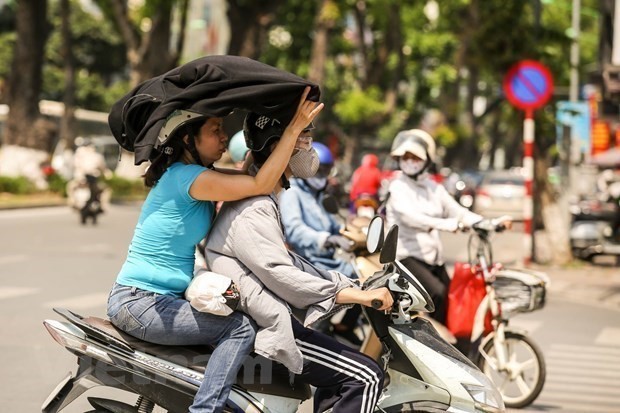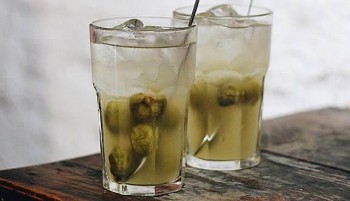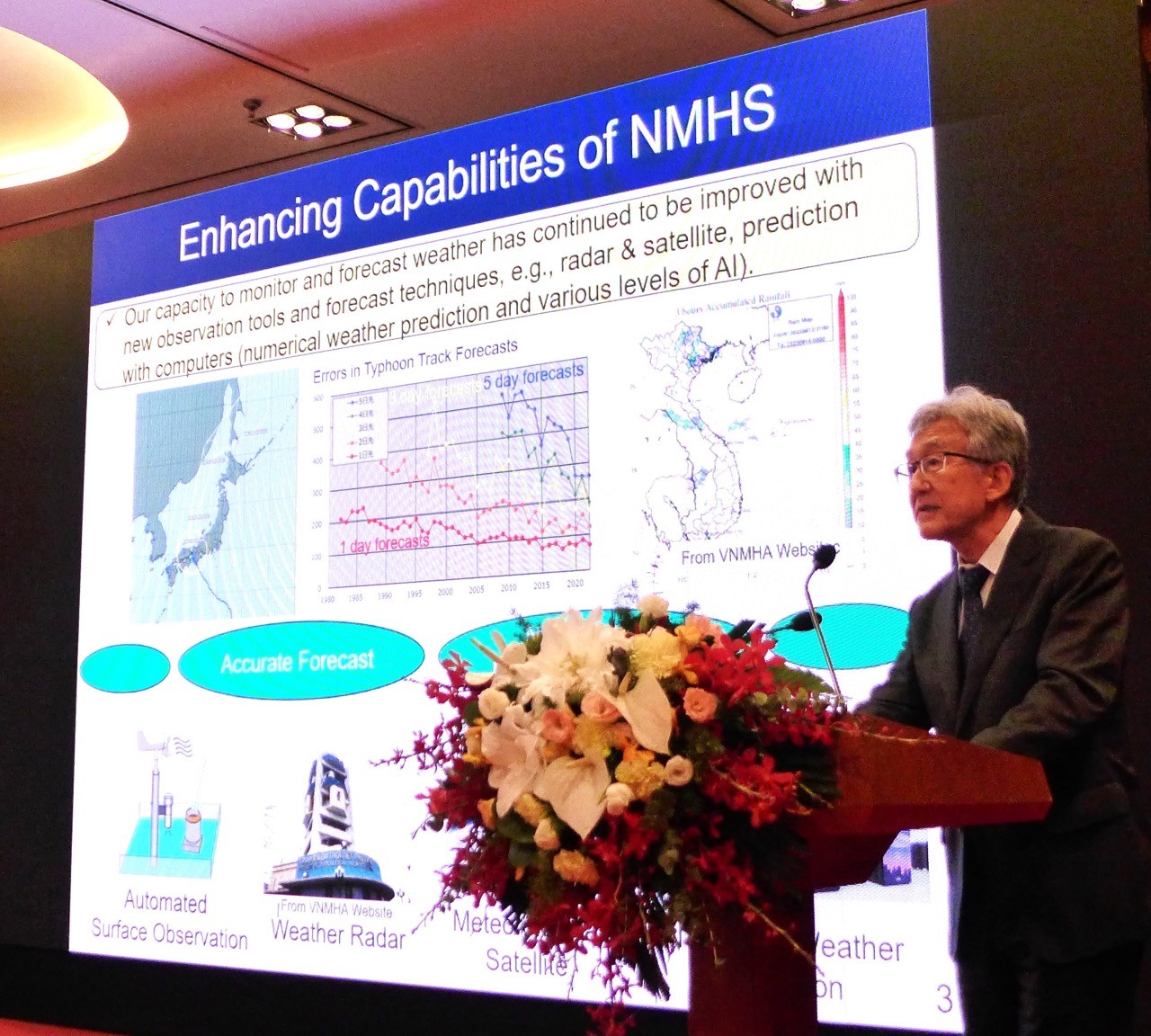Summer Tips: Keep Yourself and Family Safe from Scorching Heat
 |
| The northern region, including Hanoi, is currently experiencing a spell of scorching heat, with daytime temperatures hitting approximately 40 degrees Celsius, according to the National Centre for Hydro-Meteorological Forecasting. Photo: VNA |
While the northern and central regions are experiencing scorching heat, the forecasting center said the heat may become more extreme in the time ahead.
The extreme temperature could be recorded in the northern region as well as northern and central parts of the central region in July. There is a 70 - 80% possibility that heat with the highest temperature of over 37 degrees Celsius will appear, said the National Centre for Hydro-Meteorological Forecasting.
Luckily, the current heat wave is scheduled to linger in the north until June 21 before gradually abating from June 22.
However, as heat waves are more and more intense in summer, the risk continues to rise.
Three common heat-related illnesses include heat cramps, heat exhaustion, and heatstroke. Heat cramps and heat exhaustion are less severe than heat stroke, but they can all be avoided if you take time to rest, drink enough fluids, and spend time in cool areas when they’re available.
The heat can affect anyone, but some people are more at risk because their body doesn't regulate heat well, including older people, babies, and young children, people with mental health conditions, people on certain medications, and people with chronic conditions (such as breathing or heart problems), people with limited mobility.
Here’s how to make sure you’re prepared.
Depending on a person’s age, presence of chronic medical conditions, and the number of fluids they’ve consumed, heatstroke — especially in temperatures in the triple digits — can occur in just a few short hours.
Usually, a healthy core body temperature is somewhere around 37 degrees Celsius. But if it climbs to over 40 degrees Celsius internal organs — including your brain — may become damaged.
From the least serious heat-related illness to the most serious, here’s how to identify and treat them:
 |
| Photo: Shutterstock |
Dehydration
Dehydration occurs when there is a harmful reduction in the amount of water in the body.
Symptoms: dry mouth, sleepiness, feeling thirsty, decreased urination, muscle weakness, fatigue, headache, dizziness, nausea, diarrhea
What To Do: water is the best way to prevent and beat dehydration. Maintaining normal electrolyte levels is to decrease foods high in sodium, including those that are packaged, canned, frozen or processed.
Heat cramps
The result of dehydration and low salt levels. Exercising or working in high temperatures can cause heat cramps.
Symptoms: Painful muscle cramps and spasms usually in the legs, arms, and abdomen, heavy sweating
What To Do
- Stop the activity and get to a cool place to rest
- Apply firm pressure on the cramping muscles or gently massage them to relieve the spasms
- Give sips of water unless there’s nausea, then do not give water
- Ease cramps by stretching
- Try ice packs to see if they help
 |
| Rahul Raut/HT File Photo |
Heat exhaustion
The result of dehydration and prolonged over-exertion
Symptoms: Fatigue, heavy sweating, weakness, cool, pale, clammy skin, fast, weak pulse, possible muscle cramps, dizziness nausea or vomiting, fainting
What To Do
- Move to a cooler environment (air-conditioned room, underneath a fan)
- Lay the person down and loosen or remove their clothing
- Apply cool, wet cloths to key areas, such as the groin, armpits, back and neck or bathe in cool water
- Offer sips of water
- Get medical help right away if there’s no improvement within an hour or if they vomit more than once
Heatstroke
The result of the body’s inability to regulate its temperature. It can be life-threatening.
Symptoms: Altered mental state (disorientation, confusion), throbbing headache, confusion, nausea, dizziness, shallow breathing, body temperature above 39.4 degrees Celsius, hot, red, dry skin, lack of sweating, rapid and strong pulse, fainting or loss of consciousness
What To Do
- Seek immediate medical attention and begin cooling the person while waiting, move to a cooler or air-conditioned place
- Cool the body with cool cloths or a bath
- Do not give fluids
- Depending on the severity of the heatstroke, recovery can take several days. Left untreated, experts say, heatstroke can cause lasting damage to your brain, muscles, kidneys, and other important organs. Sometimes imaging, intravenous fluid resuscitation, and medication are required.
| Prevention is always better than cure. We should take appropriate measures no matter working at indoor or outdoor workplace. For instance, drinking enough water daily or other appropriate beverages to replenish fluid and electrolytes lost, avoid beverages that include alcohol, coffee, tea or caffeine to prevent dehydration. Eating more hydrating foods and fruits such as coconut water, watermelon and other melon, kiwi, cucumber, citrus fruits, like oranges and grapefruit, carrots, pineapple, to name a few. Wearing loose-fitting, lightweight and light-colored clothing will facilitate perspiration and reduce the body heat. Taking rest in a cool place at certain time of work is also recommended. Last but not least, give yourself time to acclimatize. If you’re not used to the heat, allow time for your body to adjust. This is particularly true for people who might be moving to a new climate or travelling. |
 | Vietnam Summer Fair - First Cultural-Industrial Fair Ever in Hue The Vietnam Summer Fair 2022 (VSF2022) opened in Hue city, attracting startups in the field of cultural industry. |
 | Hanoi's Top Desserts Paradise to Try This Summer This summer, a lasting heat may overwhelm newcomers to Hanoi. Here is how to survive Hanoi's inescapabe heat with some delicious summer snacks! |
 | 3 Homemade Ice Cream Recipes for Summer Check out our favorite ice cream recipes, including chocolate banana, vanilla ice cream, and even avocado ice cream. |
Recommended
 Handbook
Handbook
Vietnam Moves Up 8 Places In World Happiness Index
 Handbook
Handbook
Travelling Vietnam Through French Artist's Children Book
 Multimedia
Multimedia
Vietnamese Turmeric Fish among Best Asian Dishes: TasteAtlas
 Handbook
Handbook
From Lost to Found: German Tourist Thanks Vietnamese Police for Returning His Bag
 Handbook
Handbook
Prediction and Resolution for the Disasters of Humanity
 Handbook
Handbook
16 French Films To Be Shown For Free During Tet Holiday In Vietnam
 Handbook
Handbook
Unique Cultural and Religious Activities to Welcome Year of the Snake
 Handbook
Handbook


